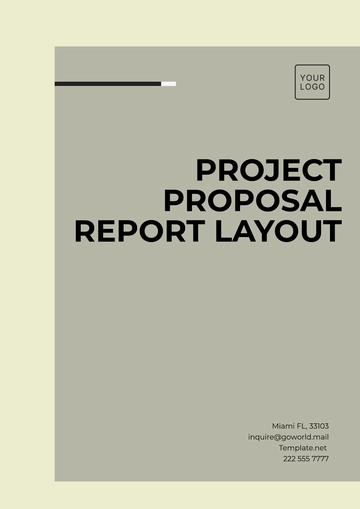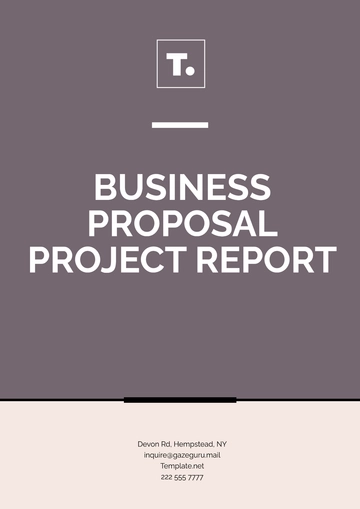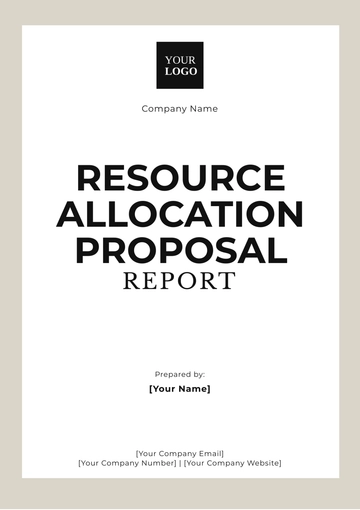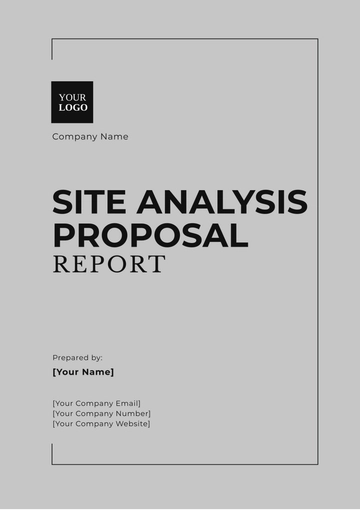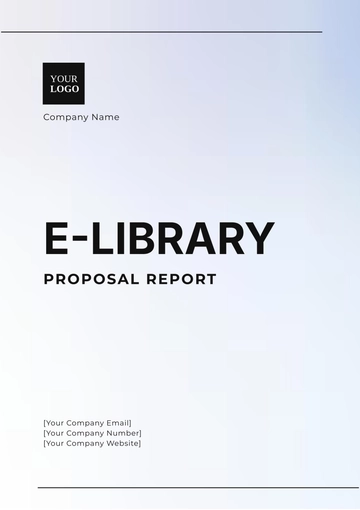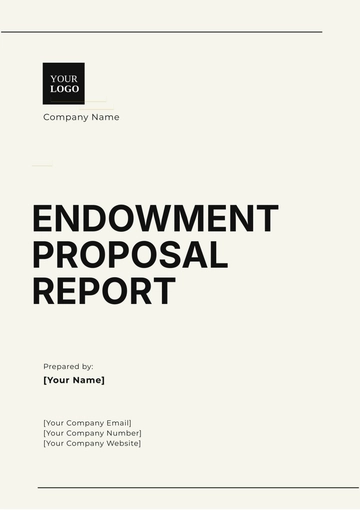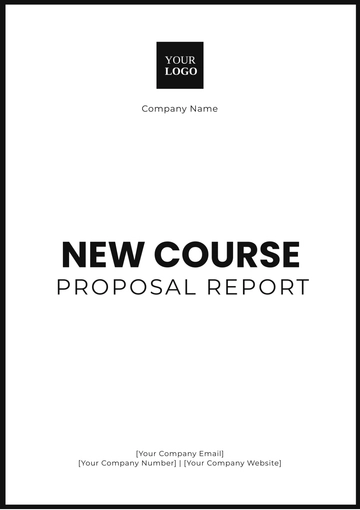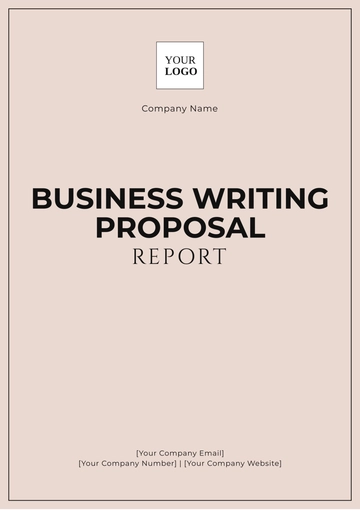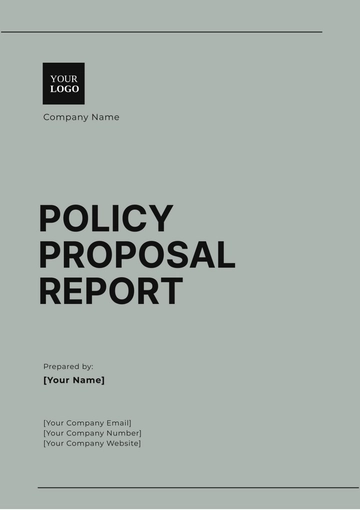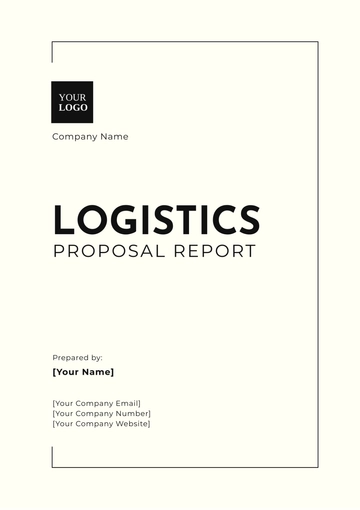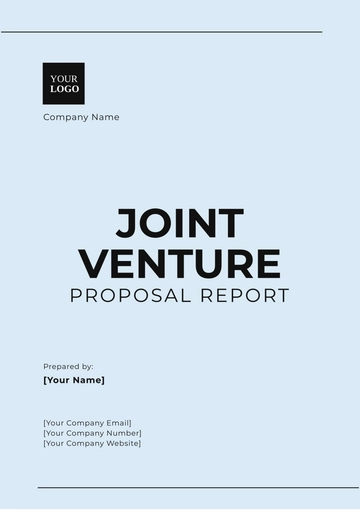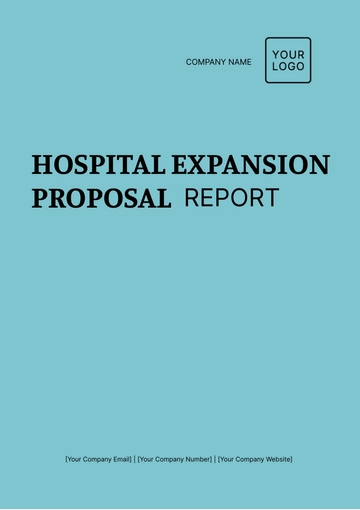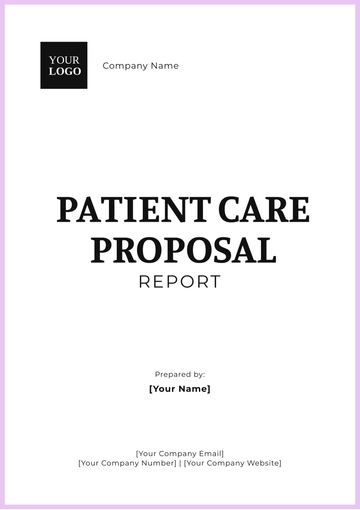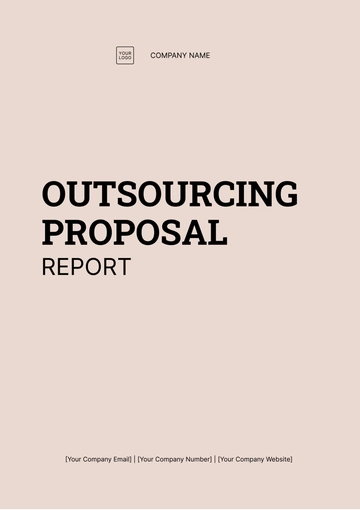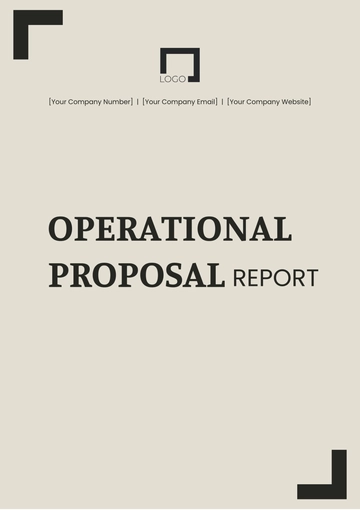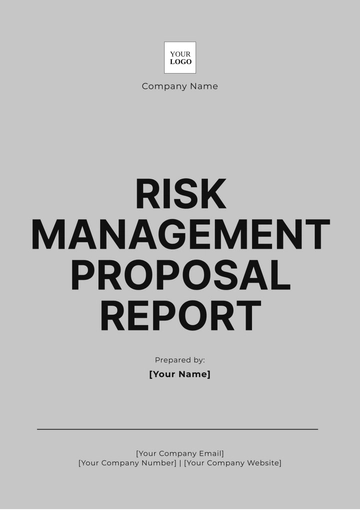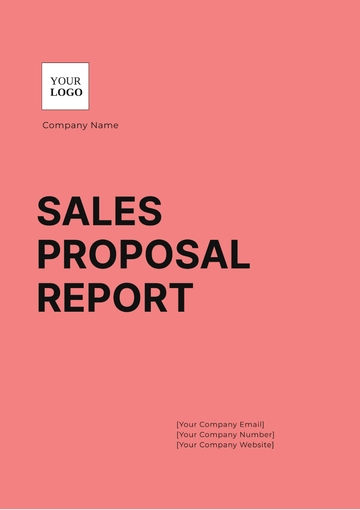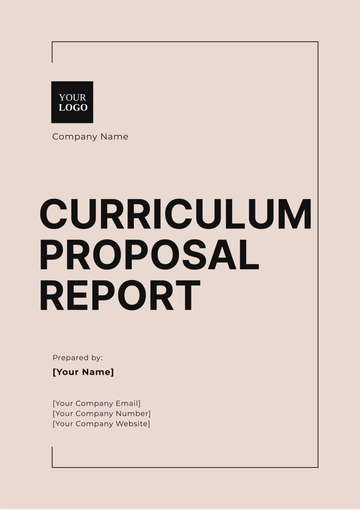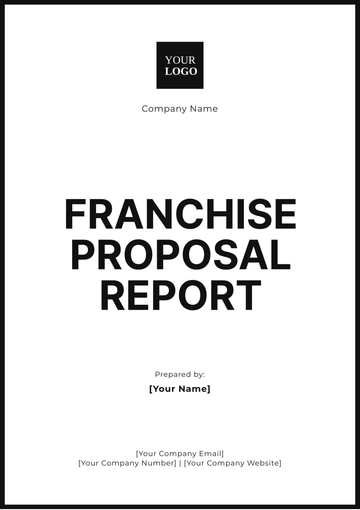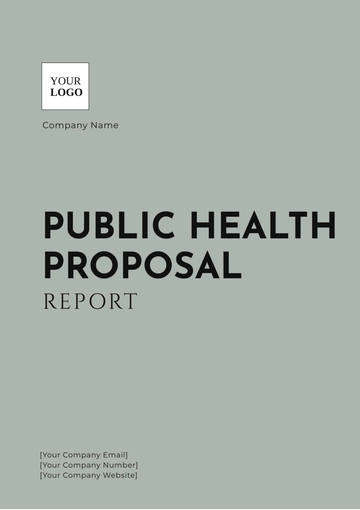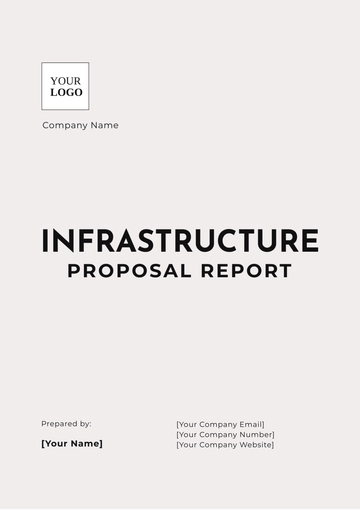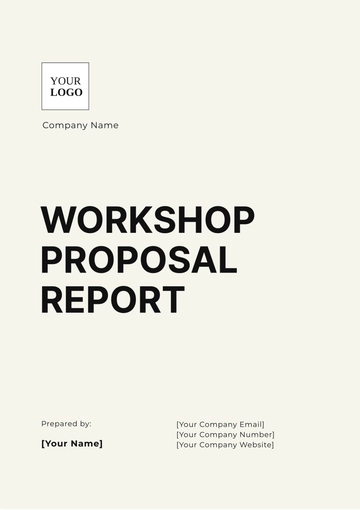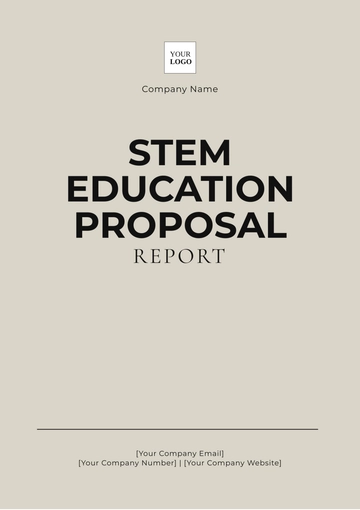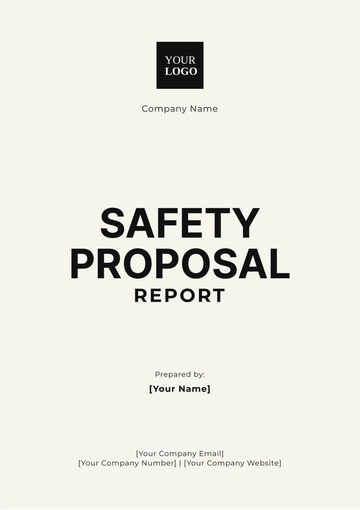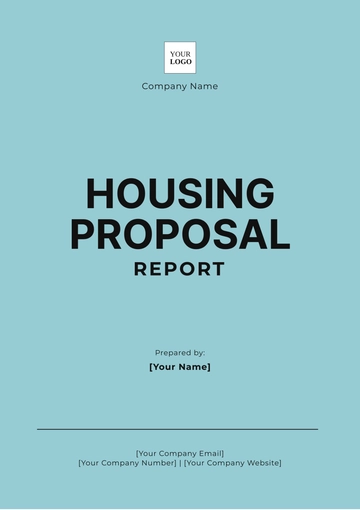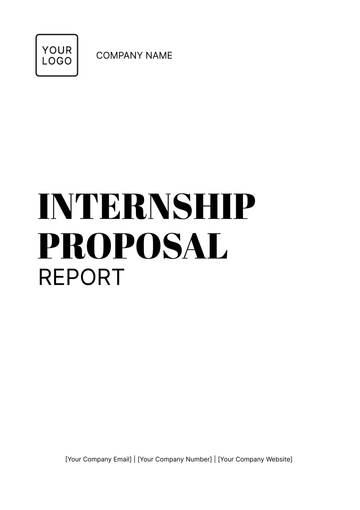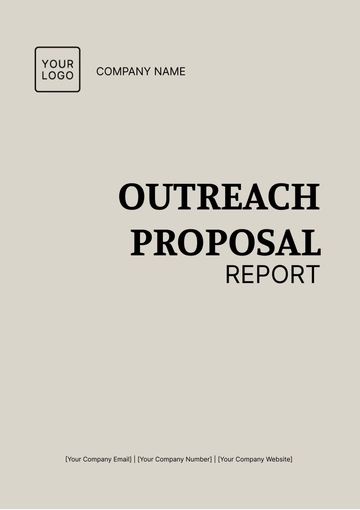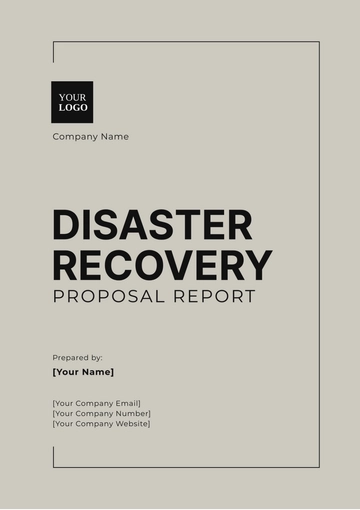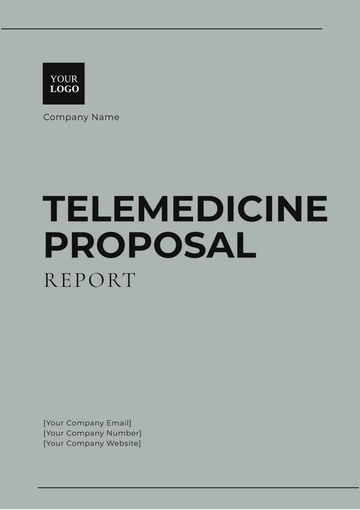Free Product Proposal Report
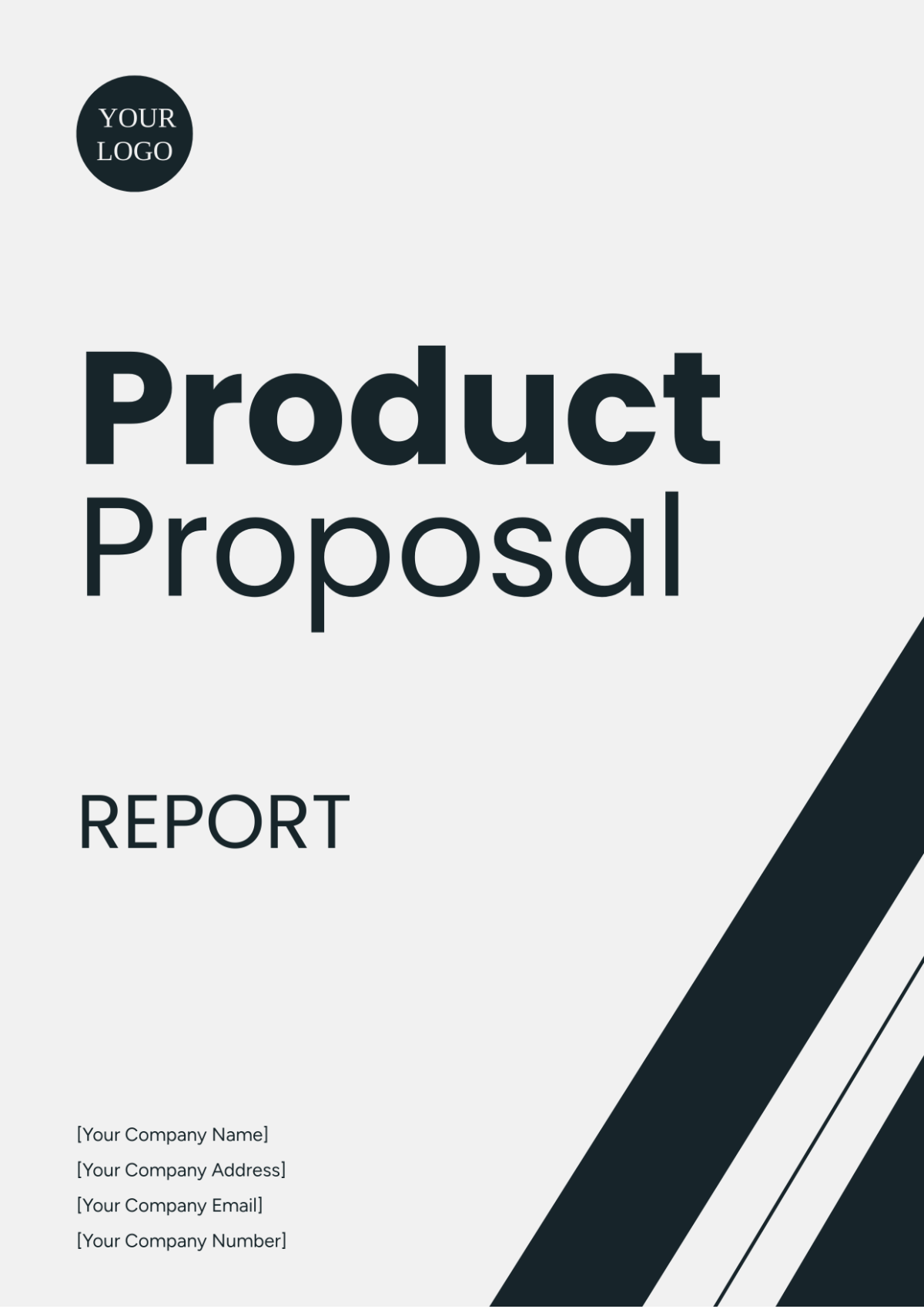
Prepared by: [Your Name]
1. Executive Summary
The "EcoFriendly Water Bottle" is a sustainable and innovative product designed to reduce single-use plastic waste. This report outlines the market need, product features, target market, marketing strategy, financial projections, and project timeline for the EcoFriendly Water Bottle. Our goal is to launch this product in Q1 2050, aiming to capture 5% of the reusable water bottle market within the first year.
2. Market Analysis
2.1 Market Need
With increasing awareness of environmental issues, consumers are seeking sustainable alternatives to everyday products. Single-use plastic bottles contribute significantly to environmental pollution, creating a demand for eco-friendly solutions.
2.2 Market Size
The global reusable water bottle market was valued at $8 billion in 2050 and is projected to grow at a CAGR of 5.8% from 2050 to 2057. This growth is driven by increasing environmental concerns and supportive government policies.
2.3 Competitor Analysis
Hydro Flask: Market leader with strong brand recognition but higher price point.
Nalgene: Known for durability and affordability but lacks modern design.
S’well: Focuses on aesthetics but is premium-priced.
3. Product Description
3.1 Product Features
Material: Made from 100% recycled stainless steel.
Capacity: 750ml.
Design: Sleek, ergonomic design with a variety of color options.
Insulation: Double-walled vacuum insulation keeps beverages cold for 24 hours and hot for 12 hours.
Lid: BPA-free, leak-proof lid with a built-in handle for easy carrying.
3.2 Unique Selling Proposition
The EcoFriendly Water Bottle not only helps reduce plastic waste but also donates 5% of profits to ocean cleanup initiatives. Its competitive pricing and stylish design make it accessible and attractive to a broad audience.
4. Target Market
4.1 Demographics
Age: 18-45
Gender: All genders
Income Level: Middle to upper-middle class
Location: Urban and suburban areas
4.2 Psychographics
Environmentally conscious individuals
Fitness enthusiasts
Outdoor adventurers
Students and professionals
5. Marketing Strategy
5.1 Product Launch
Pre-launch Campaign: Social media teasers and influencer partnerships.
Launch Event: Virtual event with live demonstrations and Q&A sessions.
5.2 Promotion
Digital Marketing: Targeted ads on social media (Instagram, Facebook, TikTok).
Content Marketing: Sustainability and product benefits: blog posts and videos.
Partnerships: Collaborations with eco groups and brands.
5.3 Distribution
Online Sales: Company website, Amazon, and other e-commerce platforms.
Retail: Select eco-friendly and outdoor retail stores.
6. Financial Projections
6.1 Revenue Forecast
Year 1 (2052): $1.2 million
Year 2 (2053): $2.5 million
Year 3 (2054): $4 million
6.2 Cost Analysis
Production Costs: $4 per unit
Marketing Costs: $200,000 annually
Operating Costs: $300,000 annually
6.3 Profit Margin
Retail Price: $25 per unit
Gross Profit Margin: 60%
7. Risk Analysis
7.1 Market Risks
Competition from established brands.
Changing consumer preferences.
7.2 Operational Risks
Supply chain disruptions.
Quality control issues.
7.3 Financial Risks
Higher than expected marketing costs.
Lower than projected sales.
8. Project Timeline
Q3 2050: Product design and prototyping.
Q4 2050: Manufacturing setup and initial production.
Q1 2052: Marketing campaign launch and product release.
Q2 2052: Expansion to additional retail partners.
Q3 2052: Review and optimize marketing strategies based on performance.
- 100% Customizable, free editor
- Access 1 Million+ Templates, photo’s & graphics
- Download or share as a template
- Click and replace photos, graphics, text, backgrounds
- Resize, crop, AI write & more
- Access advanced editor
Elevate your product development with Template.net's Product Proposal Report Template. This editable and customizable template includes critical sections such as market research, product features, development timelines, and financial projections. Editable in our AI Editor Tool, it provides a comprehensive and professional framework to present your product ideas effectively.
You may also like
- Business Proposal
- Research Proposal
- Proposal Request
- Project Proposal
- Grant Proposal
- Photography Proposal
- Job Proposal
- Budget Proposal
- Marketing Proposal
- Branding Proposal
- Advertising Proposal
- Sales Proposal
- Startup Proposal
- Event Proposal
- Creative Proposal
- Restaurant Proposal
- Blank Proposal
- One Page Proposal
- Proposal Report
- IT Proposal
- Non Profit Proposal
- Training Proposal
- Construction Proposal
- School Proposal
- Cleaning Proposal
- Contract Proposal
- HR Proposal
- Travel Agency Proposal
- Small Business Proposal
- Investment Proposal
- Bid Proposal
- Retail Business Proposal
- Sponsorship Proposal
- Academic Proposal
- Partnership Proposal
- Work Proposal
- Agency Proposal
- University Proposal
- Accounting Proposal
- Real Estate Proposal
- Hotel Proposal
- Product Proposal
- Advertising Agency Proposal
- Development Proposal
- Loan Proposal
- Website Proposal
- Nursing Home Proposal
- Financial Proposal
- Salon Proposal
- Freelancer Proposal
- Funding Proposal
- Work from Home Proposal
- Company Proposal
- Consulting Proposal
- Educational Proposal
- Construction Bid Proposal
- Interior Design Proposal
- New Product Proposal
- Sports Proposal
- Corporate Proposal
- Food Proposal
- Property Proposal
- Maintenance Proposal
- Purchase Proposal
- Rental Proposal
- Recruitment Proposal
- Social Media Proposal
- Travel Proposal
- Trip Proposal
- Software Proposal
- Conference Proposal
- Graphic Design Proposal
- Law Firm Proposal
- Medical Proposal
- Music Proposal
- Pricing Proposal
- SEO Proposal
- Strategy Proposal
- Technical Proposal
- Coaching Proposal
- Ecommerce Proposal
- Fundraising Proposal
- Landscaping Proposal
- Charity Proposal
- Contractor Proposal
- Exhibition Proposal
- Art Proposal
- Mobile Proposal
- Equipment Proposal
- Student Proposal
- Engineering Proposal
- Business Proposal
